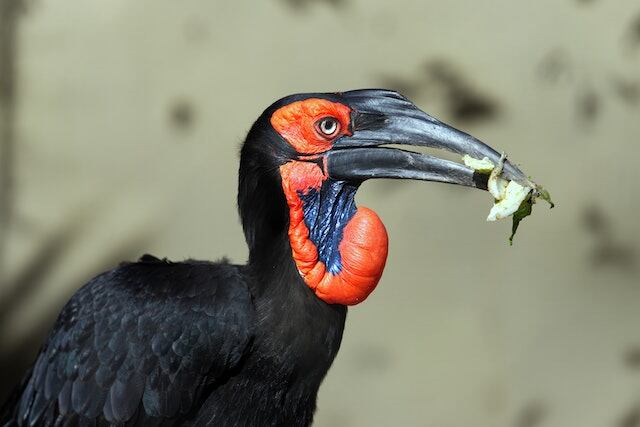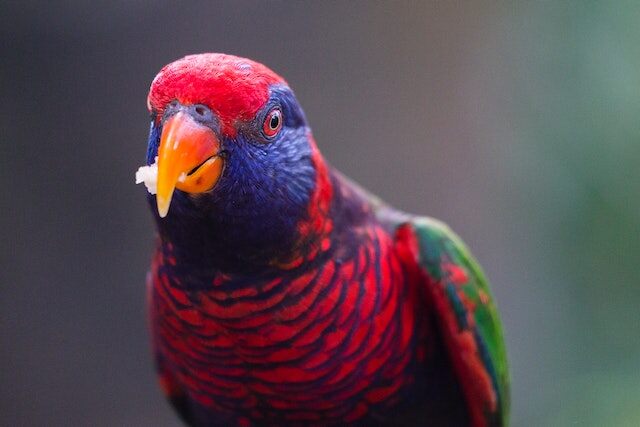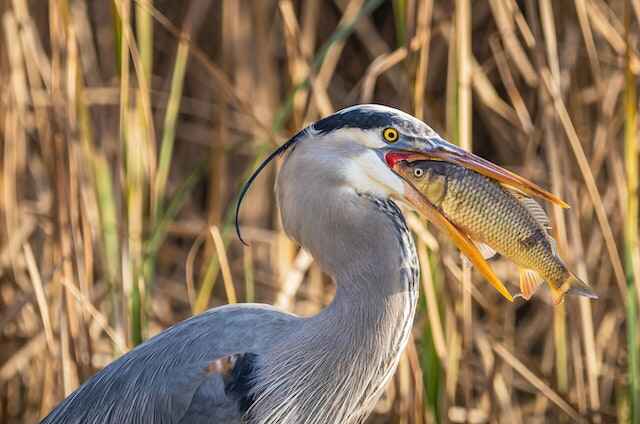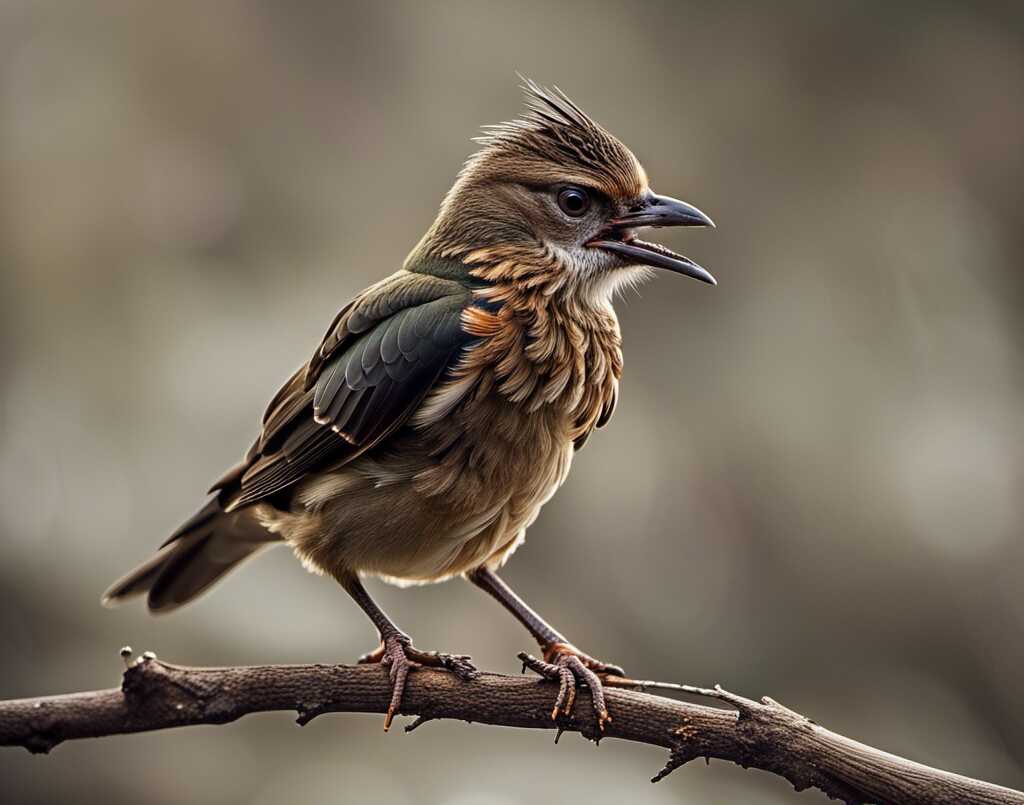Birds have long been a fascinating subject of study for scientists and nature enthusiasts alike. From their flying abilities to their unique feather structures, these animals never cease to amaze us. One of the most common questions that people ask about birds is whether they have teeth.
It turns out that the vast majority of bird species do not have teeth. Instead, they have evolved a variety of other adaptations to help them eat and process food.
These adaptations range from specialized beaks and tongues to unique digestive systems that allow them to extract nutrients from their food without chewing.
In this article, we will take a closer look at the dental anatomy of birds and explore the fascinating adaptations that have allowed them to thrive without teeth.
So, if you’ve ever wondered whether birds have teeth, stick around to find out!
Table of Contents
- 1 Key Takeaways:
- 2 Do Birds Have Teeth
- 3 Avian Dental Structure: Beyond Teeth
- 4 The Evolution of Toothed Bird Species
- 5 Beak-based Feeding: A Toothless Bird’s Strategy
- 6 Bird Skull Morphology: Insights into Dental Evolution
- 7 The Oral Cavity of Birds: Teeth or No Teeth?
- 8 The Curious Case of Toothless Birds
- 9 Examples of Birds with Pseudo-teeth
- 10 The Importance of Beak Health in Birds
- 11 The Fascinating World of Avian Dentistry
- 12 Conclusion: Unraveling the Mysteries of Birds’ Dental Anatomy
- 13 FAQs: Do Birds Have Teeth
- 13.1 What is avian dental structure?
- 13.2 Are there any toothed bird species?
- 13.3 How do toothless birds feed?
- 13.4 How do bird skulls provide insights into dental evolution?
- 13.5 What is the role of the oral cavity in birds?
- 13.6 Why don’t birds have teeth?
- 13.7 Are there any birds with pseudo-teeth?
- 13.8 What is the importance of beak health in birds?
- 13.9 What is avian dentistry?
- 13.10 Do birds have teeth in their beaks?
- 14 Author
Key Takeaways:
- Birds do not have teeth in the traditional sense.
- Instead, they have evolved diverse adaptations, including specialized beaks and digestive systems, to help them eat and process food.
- Avian dental anatomy provides valuable insights into the evolution and behavior of birds.

Do Birds Have Teeth
No, birds do not have teeth. Instead, they have evolved specialized beaks and jaws to capture and process food effectively. The absence of teeth is compensated by various adaptations, allowing them to thrive in diverse environments.
Avian Dental Structure: Beyond Teeth
When we talk about dental structure, it’s natural to assume that teeth are the core focus. However, in the case of birds, the lack of teeth has resulted in the evolution of unique adaptations in their beaks and jaws.
These adaptations have allowed birds to perform a diverse range of feeding behaviors and thrive in various environments.
Avian Beak and Jaw Anatomy
The most pronounced feature of a bird’s skull is its beak, which is made of keratin – the same material that forms our hair and fingernails.
The beak is a vital tool for capturing, handling, and manipulating food, as well as for communication, preening and grooming feathers, and building nests.
The shape, size, and strength of a bird’s beak are determined by its feeding behavior and diet.
For example, the beak of a hummingbird is long and slender, allowing it to reach deep inside flowers to extract nectar. In contrast, the beak of a bald eagle is curved and powerful, ideal for tearing apart prey.
Similarly, the beak of a pelican is long and broad, perfect for scooping up fish from the water’s surface.
The jaw structure of birds is also unique, with a single bone, the quadrate, performing the function of the mammalian lower and upper jaws.
The lower jaw, or mandible, is fused to the skull, while the upper jaw, or maxilla, is not movable.
The Relationship Between Beak Shape and Feeding Behaviors
The relationship between a bird’s beak shape and its feeding behavior is not random. Instead, the shape of the beak has evolved over time to match the specific dietary preferences and behaviors of different bird species. For example:
- Carnivorous birds, such as raptors and owls, have sharp, curved beaks that enable them to tear apart their prey with ease.
- Seed-eating birds, such as finches and sparrows, have short, conical beaks that are perfect for cracking open seeds and nuts.
- Woodpeckers have long, chisel-like beaks that allow them to bore into tree trunks to extract insects.
These examples illustrate the incredible diversity of beak shapes in birds and how they have evolved to perform intricate and complex feeding behaviors.
The Evolution of Toothed Bird Species
While the majority of modern birds lack teeth, there exists a small subset of bird species that have evolved dental structures.
These species are known as toothed bird species, and they offer valuable insights into the evolutionary history of avian dental adaptations.
Toothed birds first appeared in the Late Cretaceous period, around 85 million years ago. These early birds possessed teeth that were similar in shape and function to those of their reptilian ancestors.
However, as birds continued to evolve and diversify, the majority of species lost their teeth and developed specialized beaks instead.
Despite their rarity, toothed bird species have persisted into the present day.
The best-known example of a toothed bird is the modern-day pelican, which possesses a series of spiny projections in its beak that perform a similar function to teeth.
Other examples of toothed bird species include the merganser, seriemas, and the extinct Hesperornithiformes, which were a highly specialized group of diving birds that lived during the Late Cretaceous period.

Beak-based Feeding: A Toothless Bird’s Strategy
Modern birds have evolved a variety of beak shapes and sizes to compensate for the absence of teeth. This adaptation has allowed birds to thrive and compete with other animals for the available food resources.
The beak is composed of two parts: the upper and lower mandibles, which are hinged together by a strong ligament.
Birds use their beaks for a variety of functions, including grasping, cracking, crushing, tearing, and probing. The shape and size of the beak are closely related to the bird’s feeding habits.
For example, seed-eating birds have short, conical beaks that enable them to crack open hard shells, while nectar-feeding birds have long, slender beaks that allow them to reach deep into flowers.
Carnivorous birds such as raptors and owls have curved, sharp beaks that enable them to tear flesh and crush the bones of their prey.
Many seabirds have long, pointed beaks that they use to capture fish or squid in the open ocean. Others, like the flamingo, have specialized beaks that filter tiny organisms from the water.
Specialized Beak Structures
Some bird species have developed specialized structures on their beaks that aid in feeding. For example, the kiwi, a flightless bird from New Zealand, has nostrils located at the end of its long, slender beak.
This adaptation allows the bird to probe into the ground for insects and other small prey without inhaling dirt or debris.
The toucan, a bird found in Central and South America, has a large, colorful beak that is primarily used for display and thermoregulation.
However, the beak also contains serrations on the inside that help the bird grip and manipulate food items.
Summary
The beak is a remarkable adaptation of birds that has allowed them to diversify and specialize in their feeding habits.
While birds may not have teeth, their beaks are incredibly versatile and effective tools for capturing and processing food.
Understanding the unique beak structures and feeding strategies of different bird species is essential for conserving these important components of our ecosystems.
Bird Skull Morphology: Insights into Dental Evolution
Bird skulls are unlike any other animals’, with their unique adaptations allowing them to lack teeth while still being able to effectively capture and manipulate their food sources.
The most striking feature is the presence of a beak, which is comprised of two parts: the upper mandible – which is fused to the skull and primarily used for grasping and tearing – and the lower mandible or jaw, which is able to move independently.
The beak is an adaptation that has allowed birds to exploit a range of food sources, from nectar to seeds and insects to small mammals and fish, with ease.
The absence of teeth is compensated for by the structure of the beak, which varies greatly from species to species.
For example, the beak of a finch is small and pointed for cracking open seeds, while the beak of a raptor such as a bald eagle is hooked for tearing apart prey.
In addition to the beak, the shape of the bird skull is also an important adaptation that allows birds to effectively manipulate their food.
The bones that make up the skull are highly modified, with many of them fusing together to provide strength and support for the beak.
The eye sockets are also elongated, allowing for better vision, which aids in detecting and capturing prey.
Overall, the unique features of bird skulls provide critical insights into the evolution of dental structures.
The adaptations in skull morphology have allowed birds to thrive without teeth, demonstrating the remarkable versatility and adaptability of avian anatomy.
The Oral Cavity of Birds: Teeth or No Teeth?
When examining the interior of a bird’s mouth, one will notice the absence of teeth in most species. Instead, birds have adapted to use their beaks and tongues to manipulate and process food.
The beak is a crucial organ that helps birds in capturing and breaking down their food into smaller pieces that can be easily swallowed and digested.
Additionally, the tongue plays a significant role in guiding food towards the esophagus.
While the lack of teeth may seem like a disadvantage, it has allowed birds to develop unique adaptations that have enabled them to survive and thrive in various environments.
For instance, some birds have developed specialized beaks for particular feeding behaviors, such as cracking tough shells or tearing apart flesh.

The Curious Case of Toothless Birds
Many people wonder why birds don’t have teeth. While some bird species have evolved to possess “pseudo-teeth” or similar structures in their bills, the majority of birds lack teeth altogether.
In fact, most modern birds are descendants of toothed dinosaur ancestors that lived over 100 million years ago.
So why did birds lose their teeth? One theory suggests that the absence of teeth in birds may have been an adaptation for flight, as teeth are heavy and require a lot of energy to maintain.
Additionally, the evolution of beaks and specialized feeding mechanisms may have made teeth unnecessary for many bird species.
Examples of Birds with Pseudo-teeth
While most bird species lack teeth, some possess structures that resemble teeth or perform similar functions. For instance, the hagfish is a marine bird with razor-sharp dental plates that can tear through flesh with incredible ease.
Another example is the merganser, a type of duck that has serrated edges on its beak. These serrations help the bird catch and grip fish, which make up a significant part of its diet.
The hoatzin, a bird native to South America, has a unique digestive system that features a crop resembling a cow’s rumen.
This crop functions as a fermentation chamber and houses a range of microorganisms that break down tough plant material.
The hoatzin’s mouth is also equipped with spiky projections that aid in grasping and manipulating food.
These pseudo-teeth serve as a reminder of the diverse range of adaptations that avian species have developed to thrive in their respective habitats.
By exploring these structures, we gain a deeper understanding of the intricacies of avian dental evolution.
The Importance of Beak Health in Birds
Beak health is crucial for a bird’s overall health and survival. Since these structures play a critical role in feeding, preening, and communication, any damage or disease can severely affect a bird’s quality of life.
In the wild, birds with compromised beaks are less likely to find food, defend themselves, or attract mates.
Therefore, it is essential to understand the factors that affect beak health and how to maintain optimal beak condition.
Factors Affecting Beak Health
Several factors can impact the health of a bird’s beak. Diet is one of the most critical factors, as the beak’s structure and strength depend largely on the nutrients and minerals available.
A diet that is deficient in essential vitamins, proteins, or calcium can lead to weak, deformed, or brittle beaks, making it harder for birds to bite, crush, or grind their food.
Another significant factor is the bird’s environment, including exposure to extreme temperatures, chemicals, and physical trauma.
Birds that spend a lot of time in outdoor aviaries or cages are more likely to experience beak damage from the sun, wind, rain, and other environmental factors.
Additionally, birds that are kept with other birds in the same cage or aviary may become victims of pecking or fighting, leading to beak injuries.
Beak Maintenance and Care
Regular beak maintenance is essential for birds, especially those that have a diet that does not naturally wear down the beak.
In the wild, birds use natural abrasive surfaces, such as tree bark or rocks, to keep their beaks in shape. However, captive birds may require additional care to maintain optimal beak health.
One way to keep the beak healthy is to provide appropriate chew toys that can help birds wear down their beaks naturally.
Softwood, natural branches, and untreated leather toys are excellent choices for birds that enjoy chewing.
It is also helpful to provide a well-balanced diet that includes a variety of foods and nutrients to support beak strength and growth.
Finally, it is essential to monitor birds’ beak condition regularly.
Any signs of abnormal growth, discoloration, or damage should be addressed promptly by a veterinarian or an experienced bird care specialist.
Neglecting beak health can lead to serious problems, such as infection, malnutrition, or even death.

The Fascinating World of Avian Dentistry
While often overlooked, the oral health of birds is crucial to their overall well-being. This is where avian dentistry comes into play, a specialized field of veterinary medicine focused on diagnosing and treating dental issues in birds.
Avian dentistry involves the examination and treatment of various oral structures in birds, including the beak, tongue, and throat.
The field encompasses a range of procedures, from routine beak trimming in pet birds to complex dental surgeries in wild bird populations.
Veterinarians and avian dental experts play a vital role in preserving the oral health of birds.
They use specialized tools and techniques to treat common dental issues in birds, such as overgrowth of the beak or malocclusion, a misalignment of the upper and lower beak.
Proper beak care is also crucial for maintaining birds’ oral health.
Providing a balanced diet with appropriate levels of calcium and vitamin D can help prevent beak deformities and promote healthy growth.
Regular beak trimming may also be necessary in some cases to prevent overgrowth and ensure proper feeding and grooming.
The field of avian dentistry is still evolving, and research continues to shed light on the complex oral structures of birds.
By understanding the unique adaptations and challenges of avian dental anatomy, we can better care for these fascinating and diverse creatures.
Conclusion: Unraveling the Mysteries of Birds’ Dental Anatomy
After exploring the intriguing world of avian dental anatomy, it is clear that the absence of teeth in most bird species is a remarkable adaptation that has allowed them to thrive in diverse environments.
Instead of relying on teeth, birds have evolved specialized beaks and jaws that enable them to capture and process food, with some species even developing structures resembling teeth or performing similar functions.
However, the importance of maintaining a healthy beak for birds cannot be overstated.
A damaged or overgrown beak can cause significant health problems and even make it difficult for birds to eat and survive.
As such, proper beak care and regular check-ups with avian veterinarians are vital.
In the field of avian dentistry, experts play a crucial role in treating dental issues in pet birds and preserving the oral health of wild bird populations.
By understanding the unique adaptations and structures of avian dental anatomy, experts can provide better care and support to these fascinating creatures.
Overall, the curious case of birds’ dental anatomy continues to intrigue and fascinate researchers and bird enthusiasts alike.
By unraveling the mysteries of avian dentistry, we can gain a deeper understanding of the evolution and behavior of these remarkable creatures.

FAQs: Do Birds Have Teeth
What is avian dental structure?
Avian dental structure refers to the unique adaptations of bird beaks and jaws that compensate for the absence of teeth.
Are there any toothed bird species?
Yes, some bird species in the past had teeth, although modern birds are mostly toothless.
How do toothless birds feed?
Toothless birds rely on their beaks for feeding, with specialized beak structures for different dietary preferences.
How do bird skulls provide insights into dental evolution?
Bird skulls have unique features that help us understand the evolution of dental structures in birds.
What is the role of the oral cavity in birds?
The oral cavity of birds aids in food manipulation and digestion, with the bill playing a crucial role in capturing and processing food.
Why don’t birds have teeth?
The absence of teeth in most bird species is due to evolutionary adaptations that have shaped their feeding strategies.
Are there any birds with pseudo-teeth?
Yes, some bird species possess structures resembling teeth or perform similar functions.
What is the importance of beak health in birds?
Maintaining a healthy beak is essential for birds’ overall well-being and survival.
What is avian dentistry?
Avian dentistry is the specialized field that focuses on the oral health and care of birds, including both pet and wild birds.
Do birds have teeth in their beaks?
No, birds do not have teeth in their beaks. Instead, they have evolved specialized beaks and jaws to capture and process food, replacing the function of teeth.


